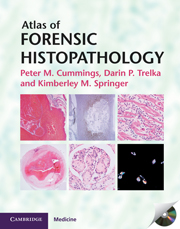5 - Poisoning
Published online by Cambridge University Press: 05 August 2013
Summary
INTRODUCTION
A poison is a substance taken internally or externally that impairs health or destroys life. In this chapter, some classic histologic findings in acute and chronic poisoning (including substance abuse) are presented. The determination of cause and manner of death in a poisoning requires a careful summation of circumstance, toxicology, and autopsy. Toxicology results are usually necessary, but alone are not sufficient for forming an opinion on cause and manner. Many variables, including postmortem redistribution, post-exposure survival, and overlap between therapeutic and toxic ranges, introduce uncertainty in the interpretation of postmortem drug levels. Gross and microscopic findings at autopsy can be supportive of acute and/or chronic substance abuse or may show unexpected sequelae of chronic substance abuse (e.g., infective endocarditis). Sometimes histology may be the first clue in a case of poisoning. An example of this is finding oxalate crystals in the kidneys of an otherwise unremarkable autopsy, as ethylene glycol is not detected by most toxicology laboratories in routine screening.
- Type
- Chapter
- Information
- Atlas of Forensic Histopathology , pp. 53 - 79Publisher: Cambridge University PressPrint publication year: 2000



